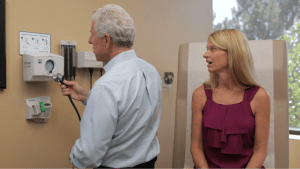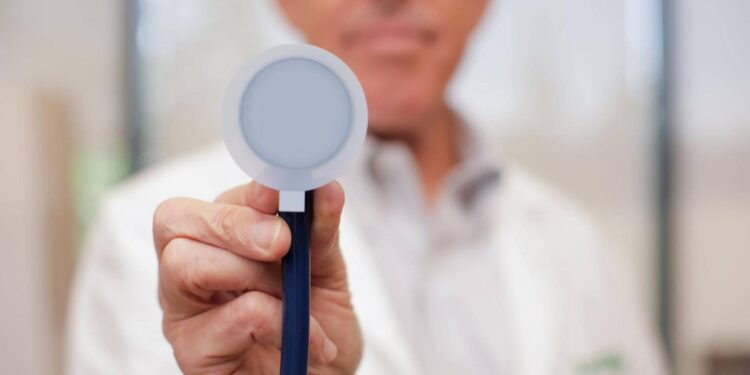The Centers for Disease Control and Prevention (CDC) emphasize the importance of maintaining stethoscope hygiene in the fight against disease transmission. Following the CDC’s recommendations, the incidence of healthcare-associated infections (HAIs) has significantly increased. Research indicates that medical devices are frequently neglected as potential sources of pathogen transmission through touch, a notion that contradicts the assumption that hand hygiene is the sole focus in medical environments. Notably, stethoscopes have been identified as major contributors to the spread of disease and bacteria, primarily due to inadequate cleaning protocols and their frequent interactions with patients.
AseptiScope®, an innovative startup from California, has introduced the DiskCover® System designed to prevent direct contact between stethoscopes and patients during examinations. This cutting-edge technology is being embraced by top cancer treatment facilities across the United States, providing protection for at-risk patients and combating the emergence of alcohol-resistant pathogens.

Stethoscopes, often referred to as a ‘clinician’s third hand’, are utilized with American patients over five billion times annually and can be contaminated to the same degree as unwashed hands. These findings suggest that infection control strategies have not adequately addressed the risks associated with certain medical tools, particularly stethoscopes. The National Library of Medicine reports that fewer than 4% of instances involved stethoscopes that had been cleaned according to CDC recommendations. Given these circumstances, it is highly likely that patients are subjected to pathogens on each visit to a healthcare facility.
Historical guidelines have improperly categorized stethoscope-related concerns as “noncritical,” despite evidence to the contrary. Experts have since requested that the CDC acknowledge this issue’s significance comparable to that of hand hygiene. In response, the CDC confirmed that stethoscopes can indeed ‘transmit via touch’ and that appropriate hygiene protocols should be implemented between patient exams.
Prolonged disinfection practices using isopropyl alcohol have contributed to the emergence of alcohol-resistant pathogens that can survive longer than the standard 60 seconds for cleaning. To address this issue, disposable stethoscope diaphragms have been suggested as a novel approach to reduce transmission risk, while oncologists advocating for advanced solutions and revisions to CDC guidelines.
The DiskCover System represents a breakthrough in technology, providing an instant solution to contamination and transmission issues associated with stethoscopes. This advanced system has shown effectiveness that surpasses traditional disinfection methods, ensuring a barrier-free contact between the patient and the stethoscope, thus keeping examinations safe from harmful pathogens.
Recently, specialists in U.S. cancer centers have advocated for a renewed emphasis on stethoscope hygiene as a “new normal.” In their analysis of hygiene data, experts recognized the advantages of the DiskCover System’s touch-free, aseptic barriers, noting it delivered an “aseptic point of contact 100% of the time,” enhancing patient safety significantly.
During the annual oncology emergency conference hosted by MD Anderson Cancer Center in Houston, Texas, several presentations were made regarding stethoscope contamination, including a paper titled “stethoscopes no longer need to touch patients,” which garnered significant interest from attendees.
Scott Mader, the CEO of AseptiScope based in San Diego, believes that the DiskCover System could transform the approach to crucial patient safety issues. It is designed for practicality, ease of use, and immediate application, aiming to completely eliminate the transmission of pathogens.
“Cancer patients often have heightened susceptibility to infections due to their treatment regimens, stethoscope evaluations, and routine assessments,” stated Dr. Gerardo Midence, an oncologist at the St. Joseph Cancer Center in Lewiston, Idaho. “We assessed the DiskCover System and found it both useful and practical. Importantly, it enhances the reliability and timeliness of stethoscope hygiene.”
Positioned at hand hygiene stations, where healthcare professionals are trained to clean their hands before and after patient interactions, the DiskCover System is rightly favored by clinicians for its efficiency and time-saving capabilities.
Patients experience the DiskCover System as a positive change, as it visibly assures them of their safety. Individuals interviewed at the Cleveland Clinic expressed that they seldom witnessed the cleaning of stethoscopes and viewed the DiskCover System as an excellent way to enhance their safety.
Dr. Eric Crawley, a clinician at Hawaii Pacific Health, added: “I incorporate this every day, with every patient, and patients are universally impressed. They really appreciate our dedication to their safety, especially those undergoing transplants or treatments that compromise their immune response, as well as those at risk of picking up resistant pathogens.”
In the post-pandemic world—where patients are more concerned about cleanliness—the imperative for trustworthy, efficient, and transparent infection control protocols has never been more urgent. Research has long documented the serious risks of pathogen transmission via stethoscopes, and healthcare providers are beginning to acknowledge this reality. With its groundbreaking technology, the DiskCover System facilitates touch-free examinations and helps ensure that patients feel secure, confident that their caregivers prioritizing infection prevention and the control of emerging resistant pathogens.


